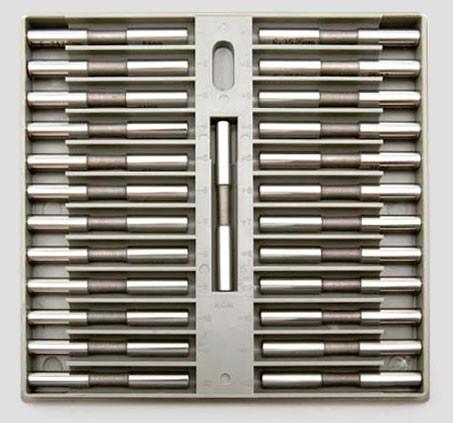victor3ranger
Well-Known Member
So, am I getting myself all wrapped up and worried over something that I shouldn't worry about since this is a hunting rifle?
 Help Support Long Range Hunting Forum
Help Support Long Range Hunting Forum
It's basically a steel cylindrical rod an inch or two long ground to a specific diameter. You can get extremely expensive gauges from several sources or remarkably inexpensive ones from amazon. For checking necks and the like the cheap pins will work fine.Dirtrax,
Excuse my ignorance but what is a pin gauge?
It's nothing to "worry" about although it is something to be aware of. It's just part of the fun man. Settle in and enjoy the process.So, am I getting myself all wrapped up and worried over something that I shouldn't worry about since this is a hunting rifle?
To build off what he said here's an example of a set full set of pins (this set is overkill, but I like visuals):Dirtrax,
Excuse my ignorance but what is a pin gauge?

OkTo build off what he said here's an example of a set full set of pins (this set is overkill, but I like visuals):

DELTRONIC - TP25 Plug Gage Sets - 25 Gages in .0001" (Tenth) Steps | Judge Tool & Gage
Shop DELTRONIC - TP25 Plug Gage Sets - 25 Gages in .0001" (Tenth) Steps from Judge Tool & Gage, trusted by the world's leading manufacturers, engineers, & designers.www.judgetool.com
Like he said, you start with a pin small enough to pass through the entire neck, then try to slide in progressively larger pins until they stop fitting into the neck. If one goes in part way there's a restriction that's a smaller inner diameter than the rest of the neck, aka a donut.
The donut I found stopped two gauges before the next pin didn't fit in the neck at all, so the donut was roughly 0.0002" smaller than the rest of the neck ID. You can pick up on donuts by feel if you run a mandrel through a neck - that's what clued me in on mine, the mandrel "popped" a touch going through the neck.
The benefit of pin gauges is you can get them in 0.0001" increments and they can tell you pretty much the exact size and location of the problem in the neck. LE Wilson will grind you a custom dimensioned neck reamer so you can remove the minimum amount of brass required to remove the donut without thinning the neck, which can be important if you still form a donut after neck turning.
I wouldn't sweat buying pins now, IMO the easy solution is just paying attention during sizing and seating.
So, am I getting myself all wrapped up and worried over something that I shouldn't worry about since this is a hunting rifle?